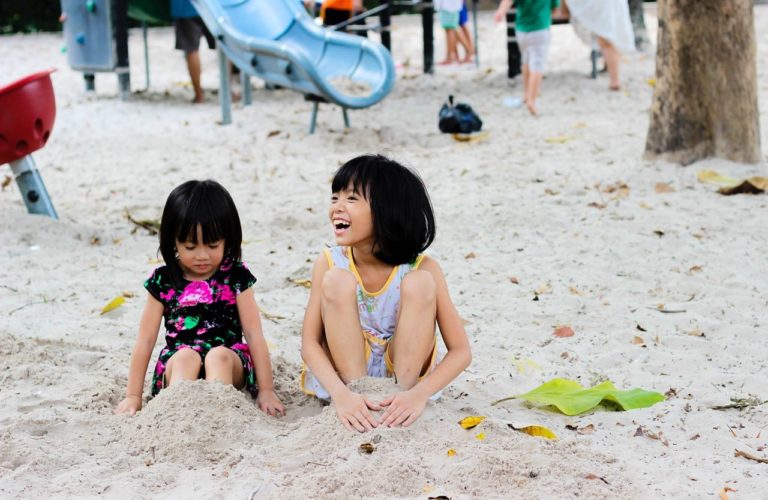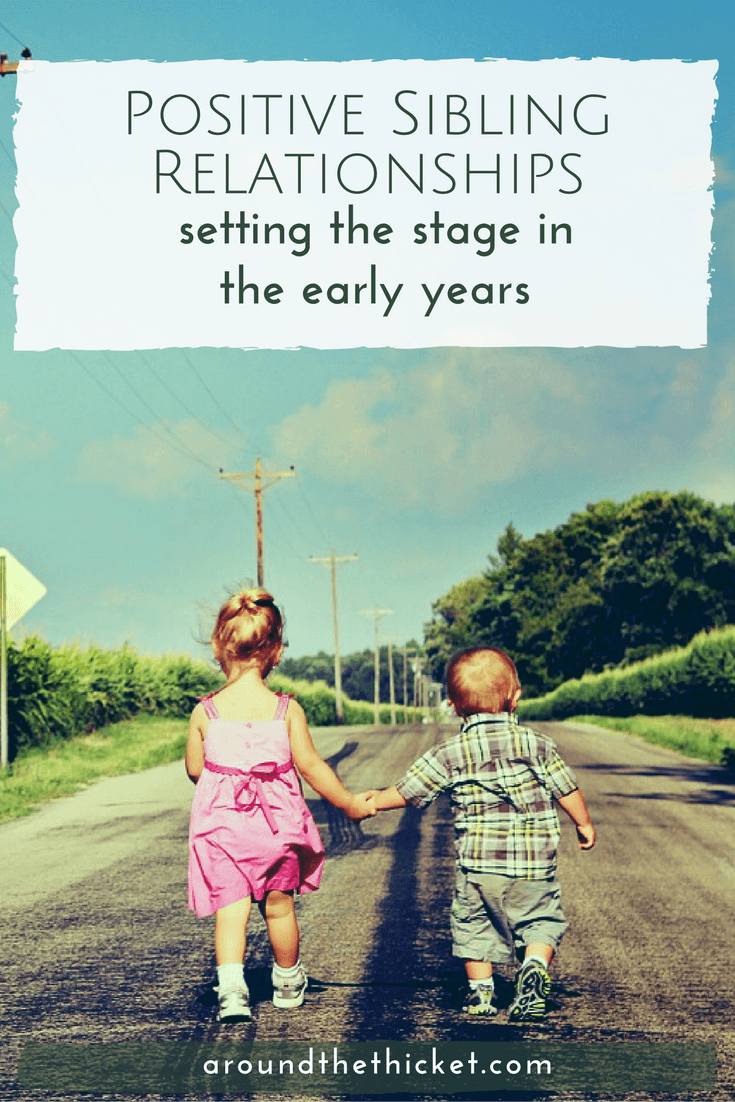Setting the Stage for Positive Sibling Relationships in the Early Years
[sc name=”Disclosure” ]
I don’t know about you, but I have spent a fair amount of time envisioning what my boys will be like when they are older. Who they will look like, how tall they will be, their interests and hobbies, and, in particular, their relationship with one another. They are sixteen months apart in age, and so I usually think about them going camping together, travelling together, discussing something we are reading for school, maybe starting a business together. The list may be a little random, but the running theme is that they have a positive, respectful relationship with each other, based as much on friendship as it is on brotherhood. I imagine most parents hope similar things for their kids.
I’ve had several people say that my boys should be good friends and playmates as they grow up, simply due to their closeness in age. Having siblings myself, though, I know first hand that superiority, competition and anger are just as likely to rear their heads as are love, camaraderie, and loyalty. While I am thankfully friends with my siblings now, I don’t know that there was any guarantee that we would end up this way. It doesn’t have much to do with how far apart we are in age.

I have been watching my boys’ relationship unfold since G. was born fourteen months ago. With N. so young at the time, there wasn’t a whole lot to comment on. As they both grew and started interacting more with one another, I started seeking some advice on how I could help them develop a good relationship. I was fortunate to come across Siblings without Rivalry by Adele Faber and Elaine Mazlish (affiliate link). It’s an older book, but it has cast an incredible vision for the next eighteen years or so as the boys are growing up. Importantly, it has helped me to realize what a significant role I actually play in setting the tone of their relationship. While a lot of the book speaks to parents of slightly older children than mine, here are a few things I have learned from the book, and how I’ve applied them to my very young kids.
Their relationship is not about me.
If I see my children’s friendship as validation of successful parenting, I will be putting far too much pressure on both of my boys, as well as tension on their relationship. I would spend my days imploring them to ‘be nice to your brother’ or ‘share your toys, that’s a good boy’. Instead of developing the traits of kindness, consideration, and generosity, they will learn to fake them in order to please me and start resenting each other in the process. Would you like to hang around with someone if their presence meant that they ended up with every toy you pick up? I wouldn’t.
It’s best if I see my kids’ relationship as something between the two of them, instead of a reflection of me or how I parent. They way they interact with each other is primarily a function of their ages and their developmental phase. I can’t take it personally when N. age 2.5 snatches toys or when G. age 14 months pulls hair. My responsibility is to keep each child safe and then to help them grow into mature, independent adults who have the skills to maintain their own relationships.

‘Coach’ is my predominant role.
My kids are too young to be left to play on their own. They aren’t old enough to be trusted not to hit or push, and there is a constant risk that they could do each other harm if I am not supervising them.
While they are spending time in the same place, though, I watch them with the goal of helping them develop the skills they need to eventually manage their relationship on their own. Important skills in any relationship include cooperation, empathy and compromise. It is a pretty tall order for very young children to demonstrate these traits, so in my role as coach I model appropriate words and help my kids as they interact. For example:
- N. is playing with a bus and G. is starting to grab for it. I stop G. from snatching and tell him that we should ask N. if he can have a turn when he is finished. I turn to N. and say, ‘N., when you are finished with the bus, G. would like a turn. Can you please give him the bus when you are done?’. He zooms the bus around the room two more times and then leaves it next to his brother.
- N. and G. are squabbling over a toy, both holding on to it. Both their tones are getting more worked up and upset. I move over to where they are and say, ‘Hmm. I see two boys who both seem to want the same toy. What can they do?’. I physically stop them from hurting each other and separate them before someone gets knocked over. ‘G., I think N. is telling us that he would like more space. I’m going to help you find another toy’. I move him away from N. and over towards the toy barn. N. eventually comes over to see what G. is doing, sits down on the other side of the barn, and both play with it quietly for some time.
- N. pushes G. over before I can get there. G. starts to cry. I move over to G. and say, ‘N. pushed you and now you’re on the floor. I’m going to pick you up.’ I pick him up and continue to empathize with what happened, ‘It seems like that surprised you. It can hurt when you bump your head.’ His crying settles, I put him down, and he moves on to play with another toy.
With this type of modelling, I am offering examples of appropriate solutions to their problems, and giving each of them a voice in their interactions which they aren’t yet able to employ themselves.

I aim to reduce competition and encourage teamwork.
The above examples have another common thread, besides modelling appropriate behavior. In each situation, I’m doing my best to minimize rivalry between the boys:
- Making N. give the bus to G. when he wanted it would set up a ‘winner’ (G.) and a ‘loser’ (N.). Distracting G. and not creating an opportunity to have the bus would have made him the ‘loser’.
- Describing their squabble over a toy and the solution in terms of ‘they’ (what can they do?) demonstrates that they both have ownership of the problem and the solution.
- Focusing on G. after he’s been pushed over rather than N. means that N. isn’t empowered by negative attention to repeat the action. It also means that he doesn’t characterize himself as a ‘bad’ or ‘naughty’ kid, a role that he could possibly play up in future. G. sees that he isn’t pitted against his brother as a ‘victim’. His reaction to being pushed over is valid and respected, but it isn’t exaggerated.
Sibling rivalry is just that: rivalry, or a competition. As their parents, Carl and I are doing our best, even at this very early age, to not give them reasons to be competitive with one another. This means not making one child out to be a winner and the other a loser, or a bad guy and a victim, and ultimately showing them that they are both a part of the solution to their altercations.
Concepts like collaboration, recognition of the feelings of others, and compassion are complex and take years to develop. Expecting my boys to be best friends and playmates at this point in the game is setting myself up for disappointment; however, by helping them to interact cooperatively now, I am equipping them with the social skills they need to manage their own relationship later. Right now it is very hands on, but as they grow and practice these traits, I will be needed less and less to coach and model. They may grow up to be best friends, or maybe just decent pals. Either way, it’s ok. It’s their relationship.
(Click through to buy Siblings without Rivalry on Amazon. I seriously cannot recommend this book enough!)



One Comment